
The Puerto Rican spindalis is a bird endemic to the island of Puerto Rico, where it is commonly known as reina mora. The species is widely distributed throughout the island and is an important part of the Puerto Rican ecosystem because of its help in seed dispersal and plant reproduction. The Puerto Rican spindalis is the unofficial national bird of Puerto Rico.

The Puerto Rican woodpecker is the only woodpecker endemic to the archipelago of Puerto Rico and is one of the five species of the genus Melanerpes that occur in the Antilles. Furthermore, it is the only resident species of the family Picidae in Puerto Rico. The species is common on the main island of Puerto Rico and rare on the island of Vieques.
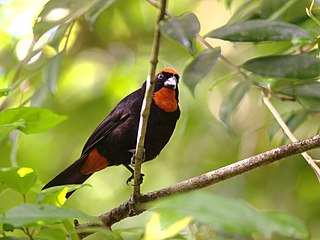
The Puerto Rican bullfinch is a small bullfinch tanager endemic to the archipelago of Puerto Rico. The species can be commonly found in heavy forests throughout Puerto Rico, except on the easternmost tip of the island. It consumes seeds, fruits, insects, and spiders. The nest is spherical, with an entrance on the side. Typically three light green eggs are laid.

The Puerto Rican sand crab, Emerita portoricensis, is a species of "sand crab" belonging to the genus Emerita, which is native to the main island of Puerto Rico and its archipelago. This species has also been found on beaches off the coast of Venezuela. The most detailed study conducted on the species was done by Miguel P. Sastre between 1988 and 1992. This investigation determined that the species has diotic traits and that there are size and survival differences between sexes. Both sexes reach sexual maturity three months after birth.
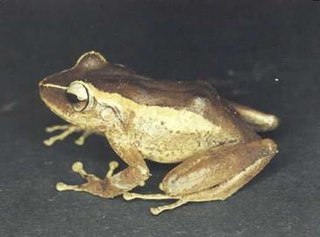
Eleutherodactylus portoricensis is a frog native to Puerto Rico that belongs to the family Eleutherodactylidae. Its vernacular English names are upland coqui, mountain coqui, and Puerto Rican robber frog. The species’ range spans the Luquillo Mountains of northeastern Puerto Rico and the Cordillera Central, which forms the highland “backbone” of Puerto Rico and includes an eastern extension beginning at the city of Cayey. However, the species is likely extirpated from the western Cordillera Central.
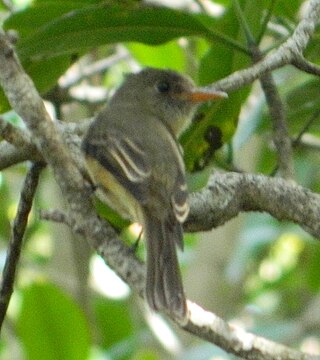
The Lesser Antillean pewee is a species of bird in the family Tyrannidae.
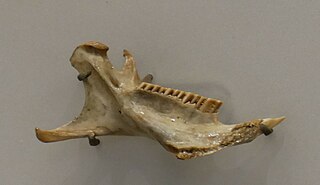
The Puerto Rican hutia is an extinct species of rodent in the family Capromyidae. It was found on Hispaniola and Gonâve Island; it was introduced to the Virgin Islands and Puerto Rico.

Brunfelsia portoricensis, the Puerto Rico raintree, is a species of flowering plant in the family Solanaceae. It is endemic to Puerto Rico, where it occurs in El Yunque National Forest.

Crescentia portoricensis, commonly known as higuero de sierra, is a species of plant in the family Bignoniaceae. It is a perennial evergreen shrub endemic to Puerto Rico. It is threatened by habitat loss. C. portoricensis can grow up to 6 meters and produces a yellowish-white bell shaped flower that ripens into dark green fruits.
Teredo portoricensis, known commonly as the Puerto Rico shipworm, is a species of wood-boring clam or shipworm, a marine bivalve mollusk in the family Teredinidae.
Randia portoricensis, known commonly as the Puerto Rico indigoberry, is a species of shrub in the family Rubiaceae. It is endemic to Puerto Rico, and is found in thickets and semi-dry forests.
Moodnopsis portoricensis is a species of snout moth in the genus Moodnopsis. It is found in Puerto Rico.

Magnolia portoricensis is a tree of the Caribbean region. Its vernacular names include jagüilla and Puerto Rico magnolia. It is native to Puerto Rico and it is found in the Toro Negro State Forest. It is an endangered tree and endemic to Puerto Rico. It is a dicot and a part of the family Magnoliaceae. It is an uncommon tree, found primarily in the central and western mountains at 500 to 925 m above sea level.

Borikenophis portoricensis is a snake endemic to Puerto Rico and the Virgin Islands. It can grow to three feet long.

Microtea, the jumby peppers, are a genus of flowering plants in the family Microteaceae, native to the Caribbean islands, Central America, and South America.

Guilarte State Forest is one of the 20 forests that make up the public forests system in Puerto Rico. The forest is located in the eastern half of the Central Mountain Range or Cordillera Central. The main geographical feature of the forest reserve is Monte Guilarte, which is Puerto Rico's 7th highest mountain at 3,950 feet above sea level. While Monte Guilarte is located in the municipality of Adjuntas, the forest's borders also include parts of Guayanilla, Peñuelas and Yauco.
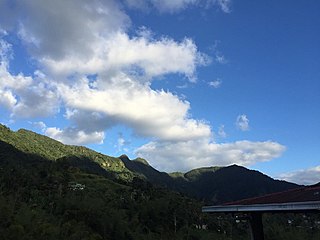
Los Tres Picachos State Forest is one of the 20 forests that make up the public forest system of Puerto Rico. The forest is located in the Central Mountain Range or Cordillera Central, along the Los Tres Picachos mountain ridge, one of the island's highest mountains, named after the distinctive three peaks of the highest mountain in the forest. The state forest is located in the municipalities of Jayuya and Ciales.
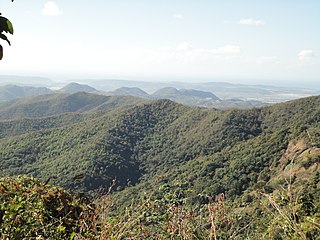
Susúa State Forest is one of the 20 forest units that make up the public forest system of Puerto Rico. This forest is located in the southeastern foothills of the Central Mountain Range or Cordillera Central, in the municipalities of Sabana Grande and Yauco. Most of the forest, particularly the lower parts, are of secondary growth as the land had originally been deforested and used for cattle grazing, timber production and agriculture. The forest is an important habitat for the endangered Puerto Rican nightjar.













